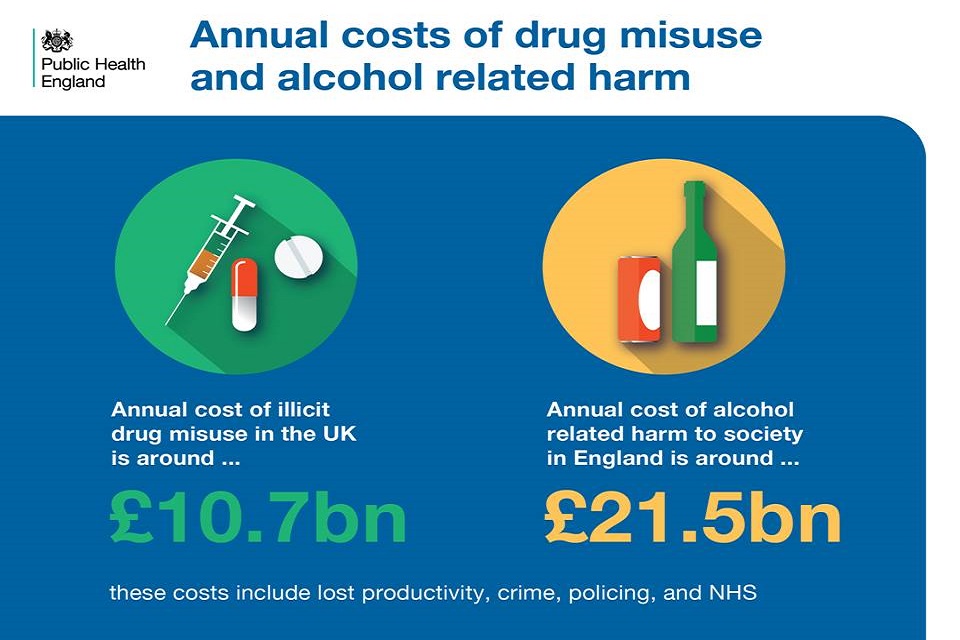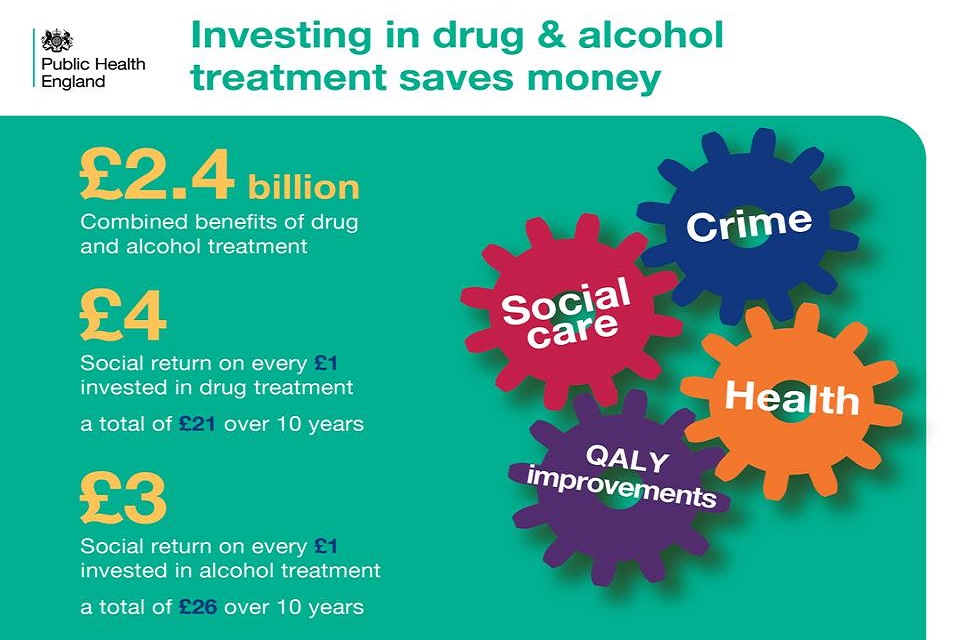Alcohol and drug prevention, treatment and recovery: why invest?
Published 12 February 2018
Local commissioners, providers and healthcare professionals can use the ‘Why invest?’ slides to help make the case for investing in drug and alcohol treatment and interventions.
Estimates show that the social and economic costs of alcohol related harm amount to £21.5bn, while harm from illicit drug use costs £10.7bn. These include costs associated with deaths, the NHS, crime and, in the case of alcohol, lost productivity.
Providing well funded drug and alcohol services is good value for money because it cuts crime, improves health, and can support individuals and families on the road to recovery.
Local authorities and clinical commissioning groups are responsible for planning and funding alcohol and drug treatment and prevention services. Information about local specialist services in each area is available on the FRANK website.
The ‘Why invest?’ slides with notes and references can be downloaded from box.com. They can be used individually or as a complete set of 32 slides.
Examples of the slides
Prevalence of drug use and dependence

Estimates show that 2.7 million adults took an illicit drug in the last year and there are around 301,000 crack or opiate users in England.
References:
- NHS Digital (2017) Statistics on Drugs Misuse: England, 2017
- Hay, G. Rael dos Santos, A. and Swithenbank, Z. (2017) Estimates of the Prevalence of Opiate Use and/or Crack Cocaine Use, 2014/15: Sweep 11 report. Public Health Institute, Liverpool John Moores University
- Marmot, M. (2010) Fair society, healthy lives: The Marmot Review. Strategic review of health inequalities in England post-2010
- HM Inspectorate of Prisons (2015) Changing patterns of substance misuse in adult prisons and service responses. A thematic review by HM Inspectorate of Prisons. London: HMIP
The annual cost of drug and alcohol-related harm

Estimates show that the social and economic costs of alcohol-related harm amount to £21.5billion, while harm from illicit drug use costs £10.7billion.
The costs of alcohol and drug misuse to society are significant.
References:
- PHE (2017) An evidence review of the outcomes that can be expected of drug misuse treatment in England
- PHE (2016) The public health burden of alcohol and the effectiveness and cost-effectiveness of alcohol control policies: an evidence review
Investing in drug and alcohol treatment saves money

The combined benefits of drug and alcohol treatment amount to £2.4billion every year, resulting in savings in areas such as crime, quality-adjusted life years (QALYs) improvements and health and social care.
Quality-adjusted life years (QALYs) are measures of life expectancy and quality of life used in health economic evaluations and resource allocations.
Alcohol treatment reflects a return on investment of £3 for every £1 invested, which increases to £26 over 10 years.
Drug treatment reflects a return on investment of £4 for every £1 invested, which increases to £21 over 10 years.
These figures are taken from PHE’s alcohol and drug treatment commissioning tool for local authorities (login required to download the tool).
